
Matching Platform for employers in Japan
Overview
Instant Match (IM) is a new feature for employers in Japan that helps them connect with more job seekers by selecting recommended candidate profiles and sending them personalized 'Invite to Apply' emails.
Project
Research and Product Design
My Role
Lead UX Designer
Scope
Market Research, IM Benchmarking, Prototyping, Usability Testing Planning, UX UI Design
Year
2023
The Challenge
Instant Match was a novel product in Japan even it had been used by employers in the US. Japan presents a unique hiring landscape—there are many job openings but a limited pool of job seekers, making it challenging for employers to find the right candidates.
The Objective
Our objective was to adapt the US version of Instant Match for the Japanese market by customizing the product to align with local regulations on candidate information and to accommodate the needs of less tech-savvy employers. This would enable employers in Japan to more effectively and proactively identify a broader pool of potential candidates.
Market Research
Since it’s the first time I designed for Japanese users, before the kickoff meeting of Instant Match, I did some market research on Japanese employers to understand their behaviours and challenges in hiring:
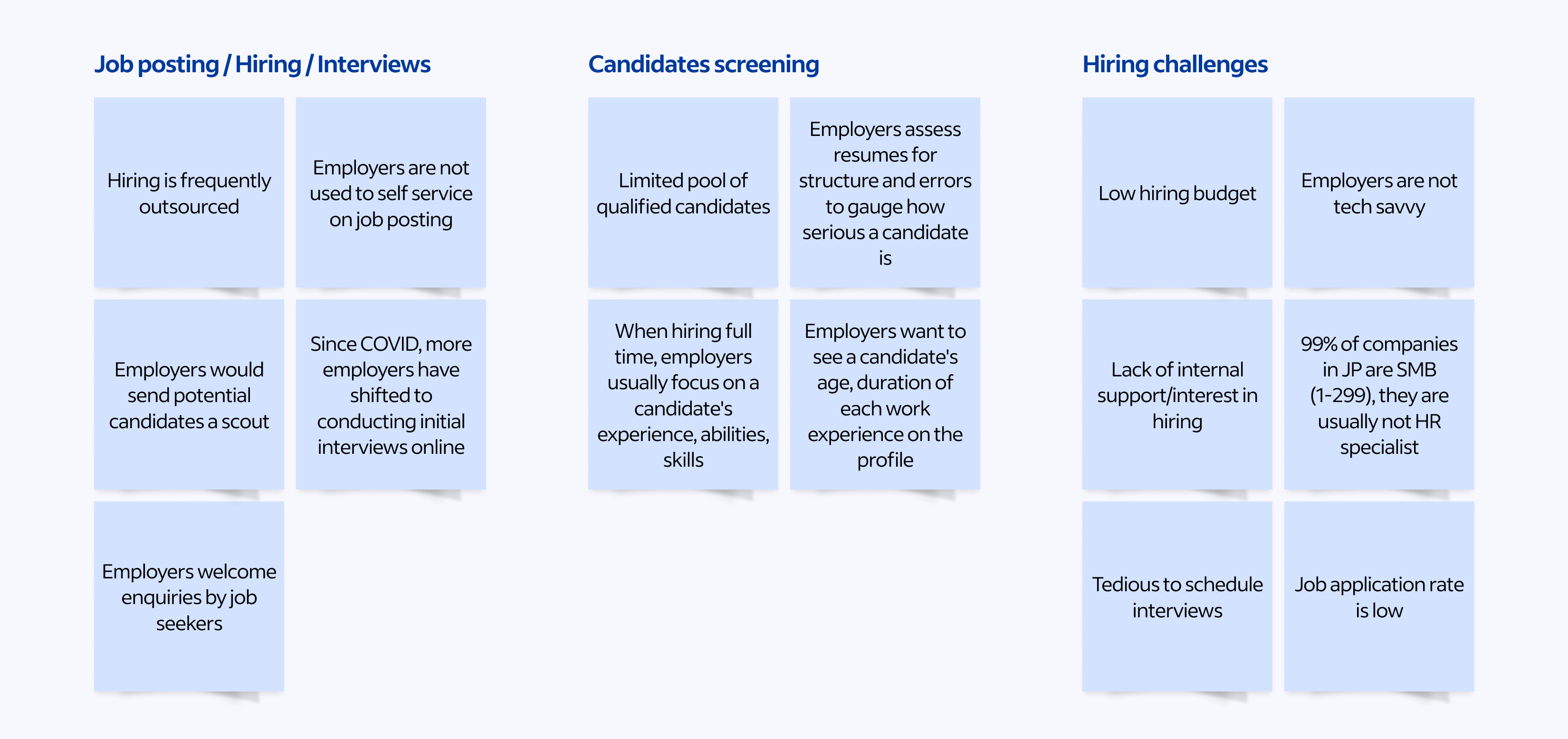
Competitors Benchmarking
After having more understanding on Japanese employers, I did a competitor benchmarking between US Instant Match and Airwork Instant Match (a popular recruitment management platform in Japan), here were what I learned from Airwork:
· On the candidate card, candidate’s age, salary and last login date are shown
· Candidate’s resume has more details such as desired conditions
· The filtering function is more comprehensive and has more conditions to filter from
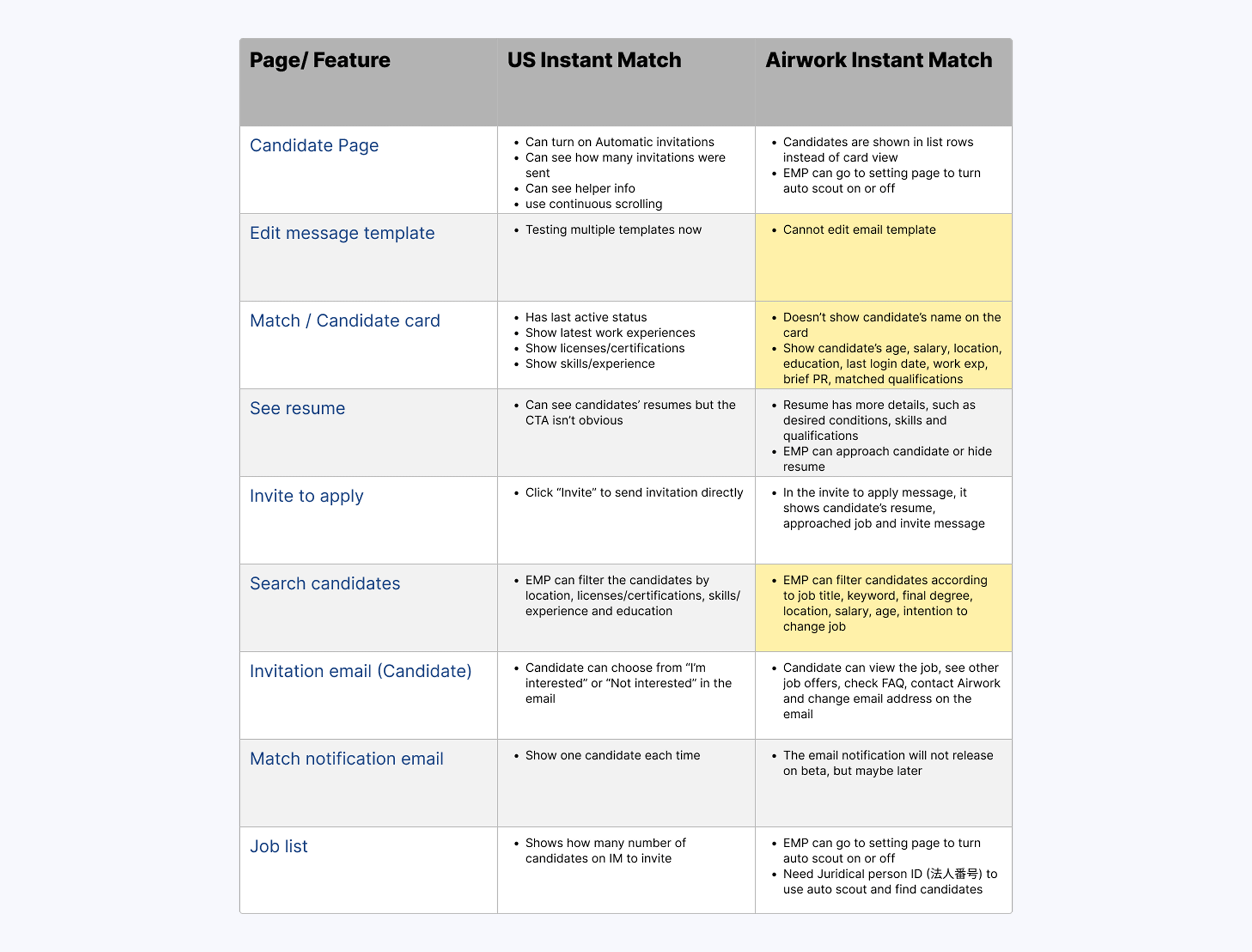
Requirement Discussions
Once the project started, our product manager created different user stories based on business requirements. I categorised the user stories according to different features. After several rounds of discussions with the PM and tech lead on the questions of the features, we confirmed what we knew and what we could find out from talking with the employers.
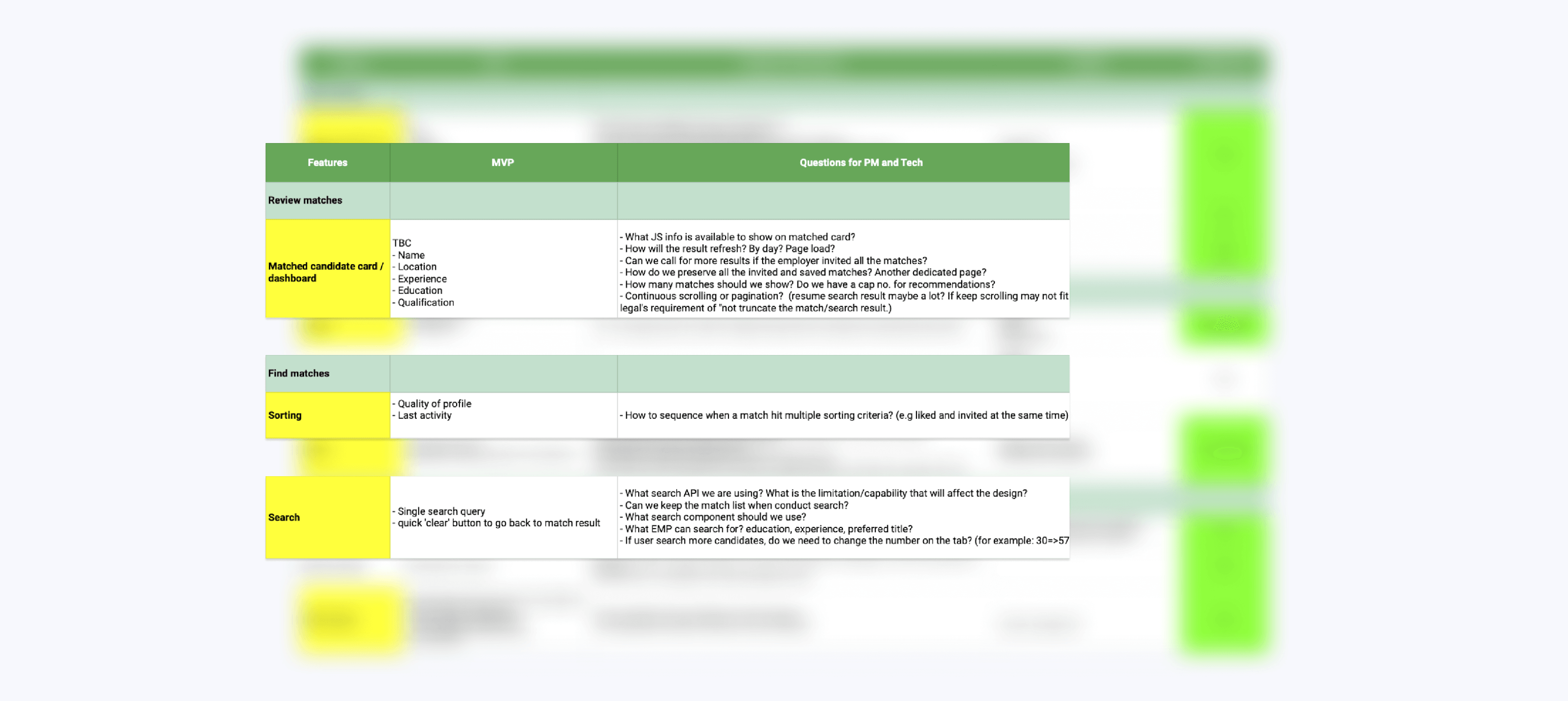
Usability Testings
After market research, competitor analysis, and requirement discussions, we decided to run usability testing with Japanese employers. This helped us understand their interest in a more proactive hiring approach and their perception of Instant Match. I created the Japan Instant Match prototype and worked with our researcher to prepare the sessions. In each session, employers first shared how they currently hire, then looked at the Figma prototype on their own computers.
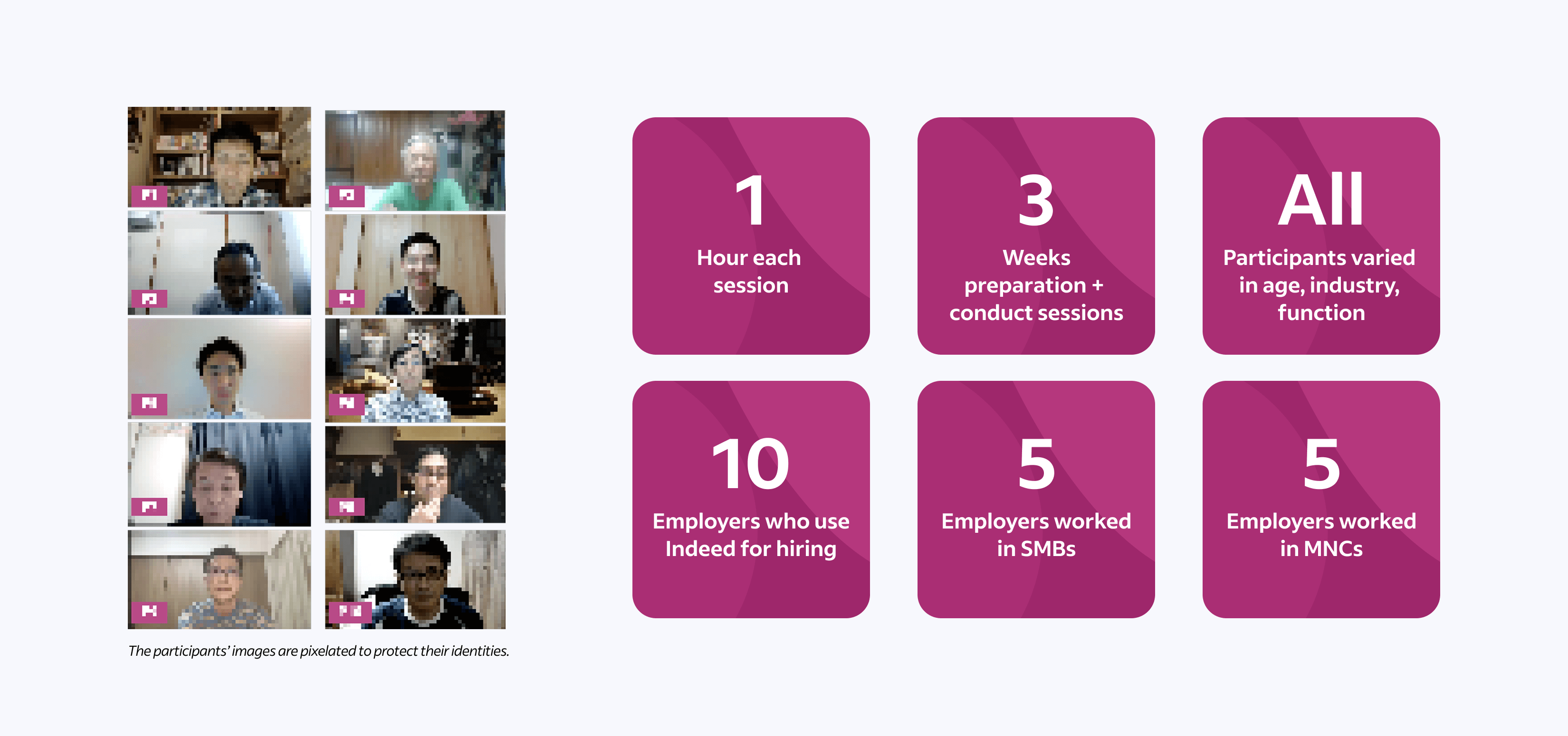
Testing the prototype
I observed and took notes during the usability sessions, which were conducted in Japanese by our researcher with real-time translation support.
We tested three key screens:
· Introduction page – To assess if employers understood what Instant Match offers and what additional information they expected.
· Job Matches page – To evaluate if employers understood the feature's purpose and knew what actions to take.
· Candidate dashboard – To check if the candidate card showed enough information and if employers could easily use the filter.
Key Takeaways

Based on the usability testing feedback, I suggested a few things to the team for MVP. At the end, we implemented some of the recommendations on the iterated design and guided the product direction.
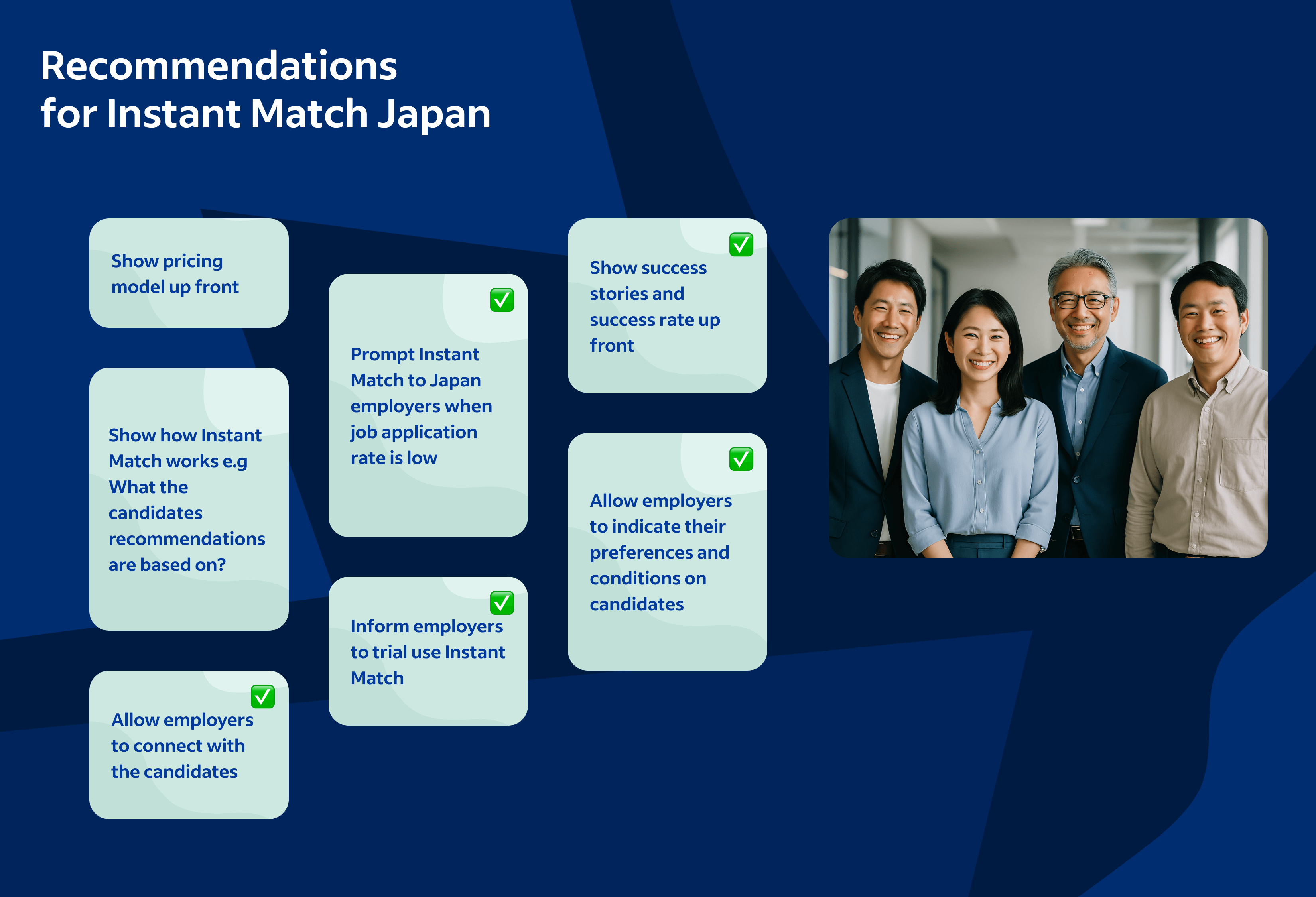
Iterations
Instant Match has transformed from its original version in the US to a tailored design specifically for employers in Japan. We received positive feedback through a survey from the employers after the launch. The next steps were to implement the other recommended features in the next iteration.
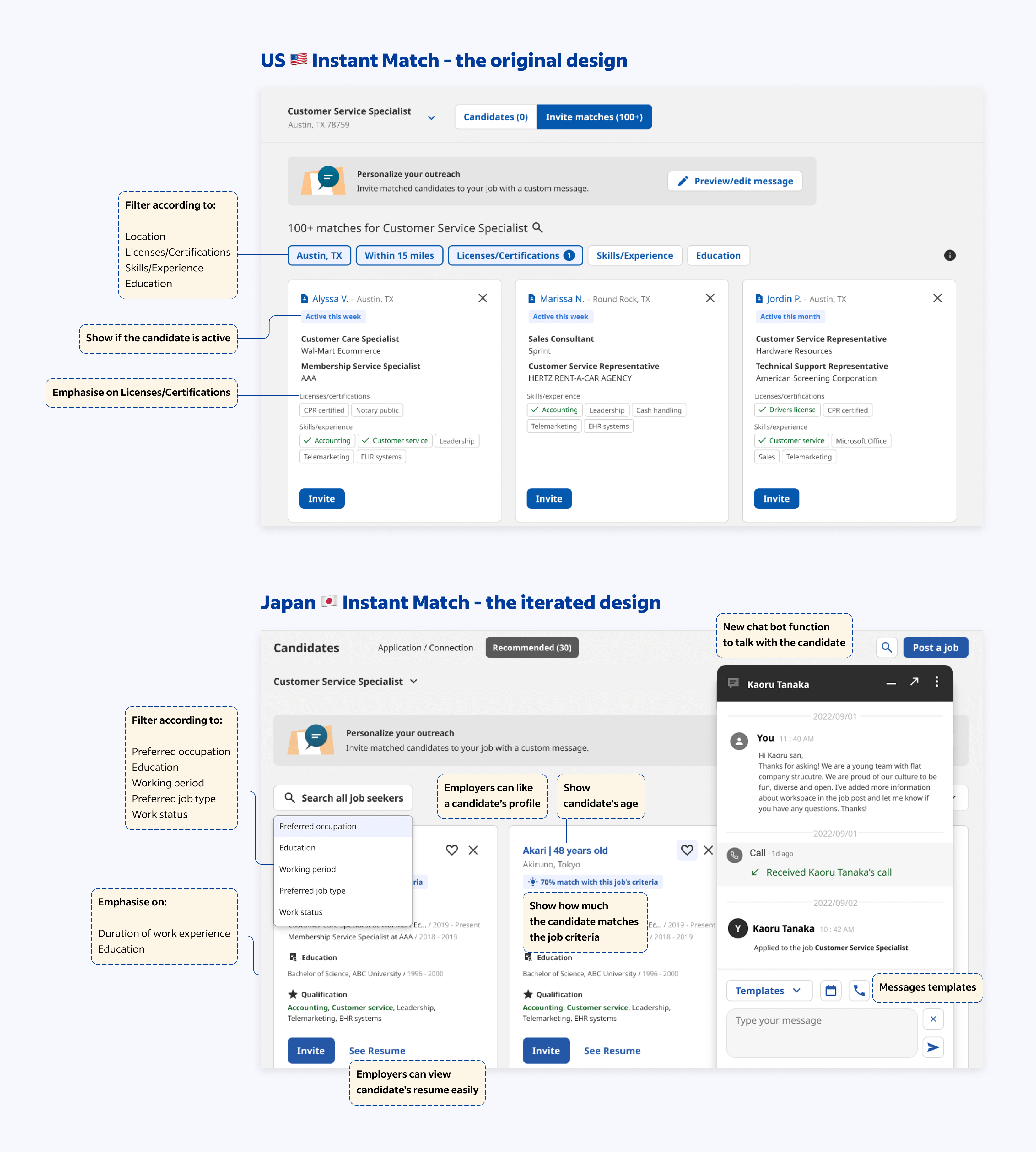
Learning
I’m grateful to have worked on Instant Match for Japanese employers—this unique market taught me a lot:
· Always take the time to understand the users, the product background, and what’s been done before.
· Always keep local users’ behaviors, needs, and pain points in mind when designing for a specific market.
· Don’t be afraid to ask questions—everyone is continuously learning.
